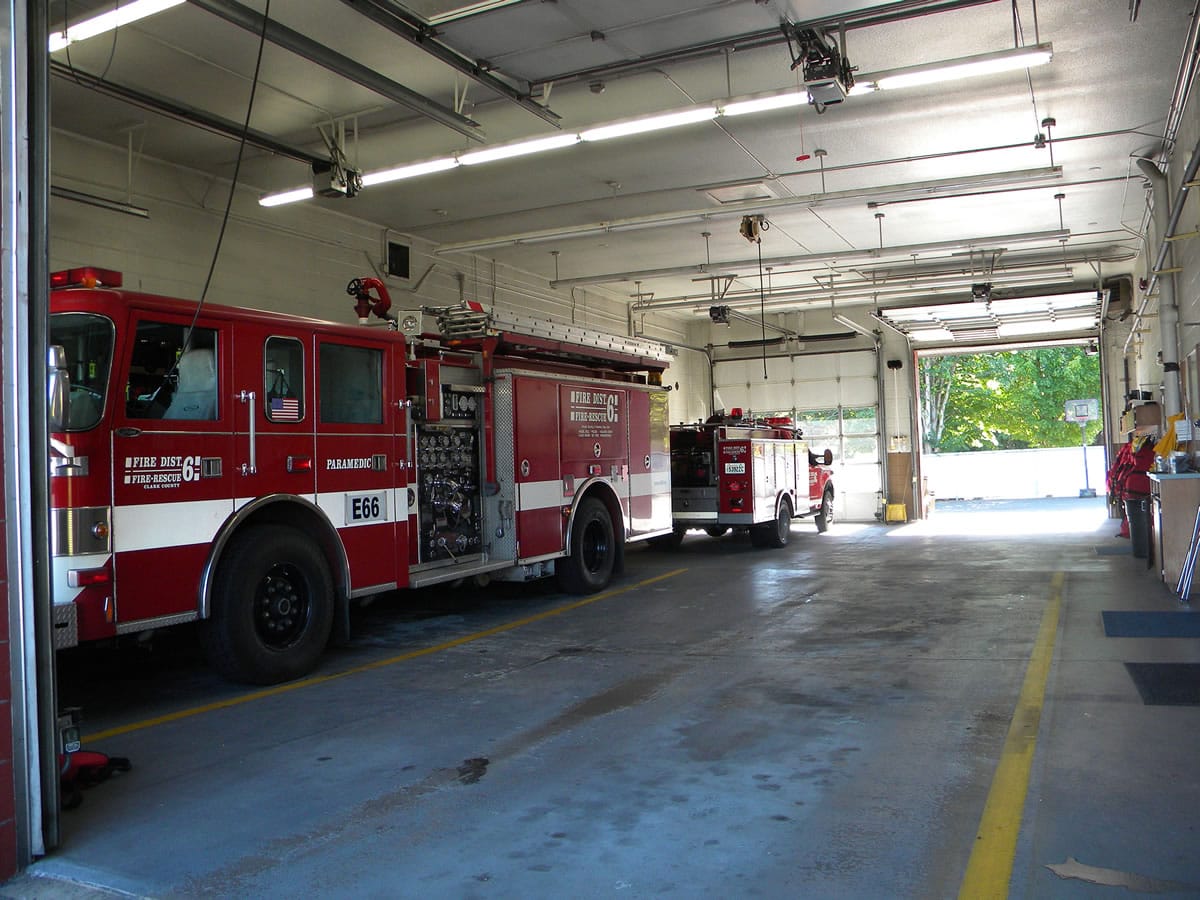Clark County Fire District 6 will ask residents to vote this election on an 18 percent increase in the property tax levy that district officials say is needed to offset years of rising expenses.
The proposed levy increase would raise property taxes for district landowners from about $1.27 per $1,000 of their assessed property value to $1.50 per $1,000 of assessed value.
For a District 6 homeowner in a $250,000 home, increasing the levy amount would mean about $57.50 more per year in property taxes paid to the district. Someone with a $250,000 home already pays about $3,000 a year in property taxes, depending on where that home sits in the district, since different taxing areas overlap.
When voters created it in 1995, the district’s regular levy was $1.50 per $1,000 of assessed value.
Barring a public vote, the total amount of property taxes collected can increase by only 1 percent per year, in keeping with a state law passed in 2007. As property values have risen, the levy rate has dropped to $1.27 per $1,000 to keep total revenue within that limit.
Even as regular 1 percent increases have increased total revenue each year, that revenue hasn’t kept pace with the district’s rising expenses, Chief Jerry Green said.
Increasing the “lid” on the levy, which is what voters will decide on come November, would give the district more flexibility in spending and planning, Green said.
More than 90 percent of the district’s revenue — about $14 million as budgeted for 2015 — comes from its levy.
The district encompasses about 37 square miles including Hazel Dell, Salmon Creek, Mount Vista, Felida, Sherwood, Lake Shore and the fairgrounds, and provides both fire and emergency medical services.
Draining the reserves
The district is debt-free, Green said, but it’s burned through most of its $1.7 million reserve in about 1 1/2 years, Green said, in part because it replaced three engines. It now has about $250,000 in reserves.
It hasn’t asked voters for anything since 1995’s levy vote.
Costs that grew with the district, rising calls for service and other expenses — combined with cuts made during the Great Recession — meant taking a hard look at the district’s revenues, Green said. During the recession, the district did not replace vehicles or equipment and didn’t hire firefighters to replace those who retired.
“We’re still just back up to a level we used to be at in 2006, 2007,” Green said. “At some point, it catches up, and that’s some of the things we’re seeing now.”
Since then, the district has only gotten busier, according to its records.
Call volume has increased 31 percent since 2005, and 10 percent since last year.
Along with that, expenses have increased. The district’s budget for protective equipment for firefighters has more than doubled since 2011.
Insurance rates with the Washington State Department of Labor and Industries have increased 148 percent since 2010.
With all that in mind this year, the district’s board approved a request to voters to increase the levy.
Earlier this year, the Washington Surveying and Rating Bureau downgraded the district’s protection rating a level, citing inadequate facilities and firefighter training. The district said that could mean 3 to 9 percent increases in insurance rates for homes and businesses.
If the ballot measure fails, Green said, he’s confident the district will be able to maintain an adequate level of service, but it would mean cutting nonemergency staff and ending such programs as CPR training, fire safety and public education.
The district also has pressing equipment and facility needs, such as a heavy remodeling of its Salmon Creek Station, and dealing with those will mean taking on debt, he said.
He said he doesn’t expect the district will have to lay off any firefighters, but it won’t be able to replace many of them as they retire. The district has about 60 staff firefighters, and 40 support staff and volunteers.




